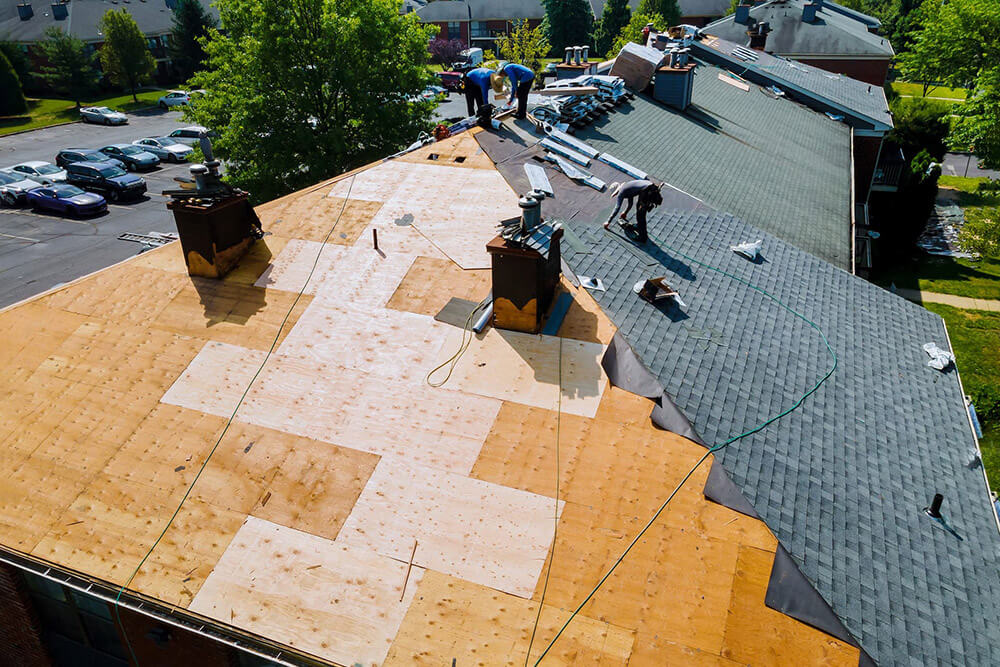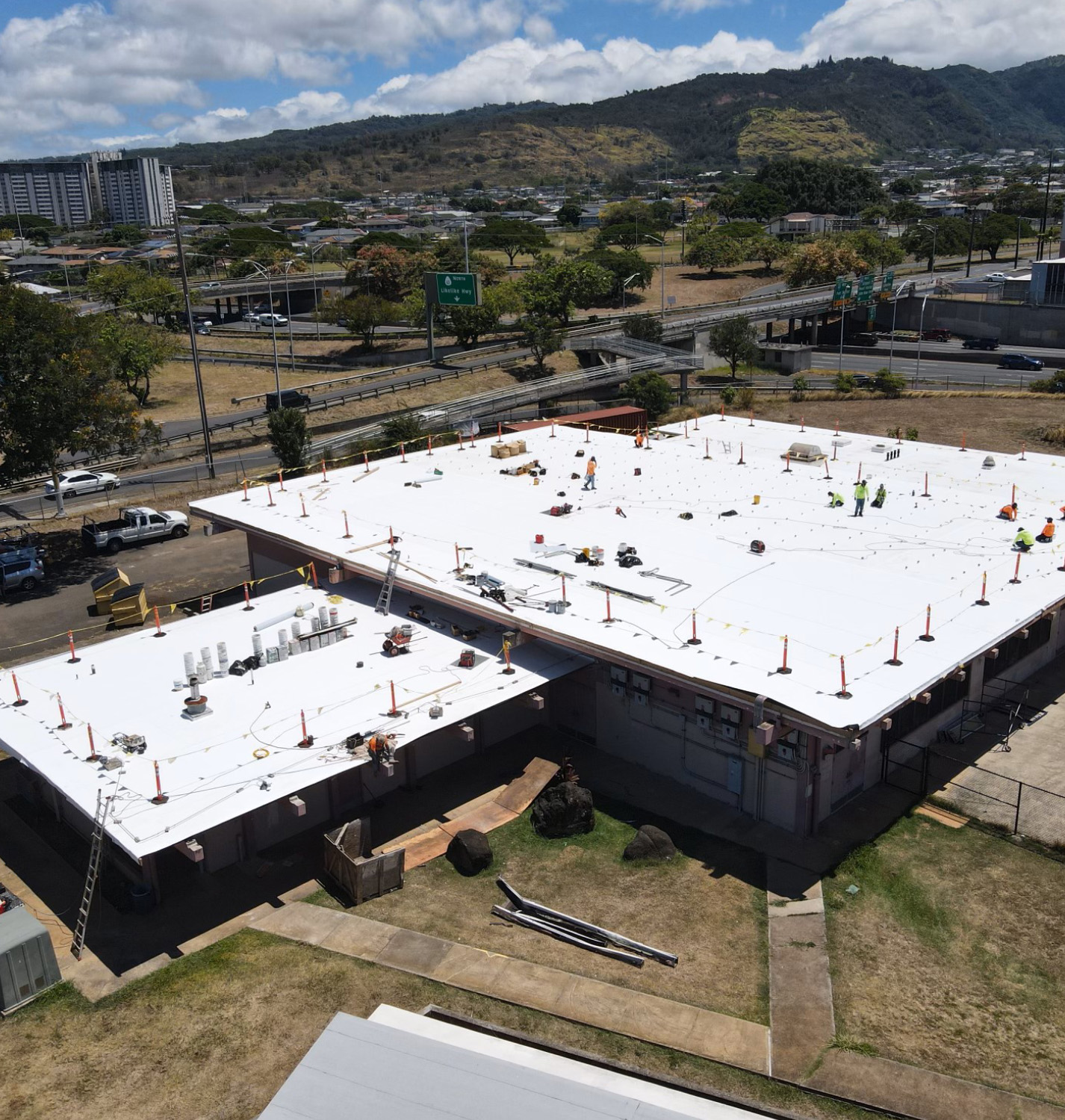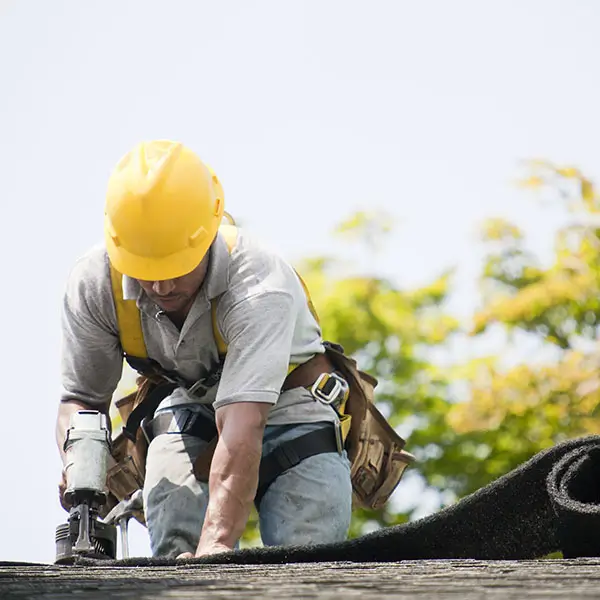Uncover Usual Roof Issues and Just How to Address Them Efficiently
When it comes to your roofing system, finding issues early can conserve you time and money. What details actions should you take to guarantee your roof covering remains in leading problem?
Identifying Roofing Leakages and Their Causes

Following, examine your roof from the exterior. Try to find missing out on or broken floor tiles, rusted flashing, or harmed rain gutters. Take notice of areas around smokeshafts, vents, and skylights, as these are typical leakage resources. If you identify any one of these issues, it's vital to resolve them promptly.
Throughout heavy rain, observe your roof covering for any kind of merging water or drips. This can expose leaks that may not be visible during dry problems. By staying attentive and routinely checking your roofing system, you can catch leakages early and secure your home from more damages.
Dealing With Missing or Harmed Roof Shingles
When you see missing out on or damaged tiles, it's important to act promptly to avoid more problems. You'll wish to determine the level of the damages, fix any missing out on tiles, and take into consideration preventive upkeep pointers to maintain your roofing system in leading shape. Taking these steps can conserve you money and time down the roadway.
Identifying Shingle Damage
Although roof shingles are developed to withstand the elements, they can still experience damages gradually, leading to prospective leakages and pricey repair work. To identify roof shingles damages, start by evaluating your roof covering for missing, split, or crinkled shingles. Try to find indications of discoloration or granule loss, which can suggest degeneration. Take notice of any locations where shingles are raising or bending, as these can create vulnerabilities. It's likewise important to look for water stains or mold and mildew on your ceilings and wall surfaces, as these could signal leaks stemming from damaged shingles. Frequently monitoring your roof, specifically after severe climate, can help you capture issues early and maintain the honesty of your home.
Repairing Missing Shingles
After spotting roof shingles damage, the next action is attending to any type of missing or damaged roof shingles quickly to stop further concerns. Beginning by evaluating the afflicted area and identifying the number of shingles need replacement. If you can, climb onto your roofing system safely, putting on ideal gear. Eliminate any broken tiles meticulously making use of a lever. When you have actually gotten rid of the location, slide in the new shingles, guaranteeing they line up with the existing ones. Safeguard them with roof nails and use roof covering adhesive for added security. Don't fail to remember to seal the edges to stop water seepage. If you're uneasy with the repair work, it's important to call a specialist. Taking activity quickly will aid preserve your roof covering's stability and extend its life-span.
Preventive Maintenance Tips
How can you keep your roof covering in leading shape and protect against roof shingles from going missing or obtaining damaged? Routine examinations are vital. Check your roofing a minimum of two times a year and after serious weather condition. Seek indications of wear, such as curling, breaking, or loosened tiles.
Maintain rain gutters clean and devoid of particles to assure appropriate water flow and protect against shingle damages. Trim overhanging branches to lessen the danger of them scratching versus your roof during tornados.
Consider applying a protective sealant to prolong your roof shingles' life expectancy. Ultimately, if you see any type of concerns, address them immediately to avoid costly repair work later. Taking these precautionary actions can conserve you time and money while guaranteeing your roofing stays long lasting and trusted.
Comprehending Roofing Ventilation Issues
Correct roof covering ventilation is crucial for keeping the durability and performance of your roof, as it assists regulate temperature and moisture levels in your attic. Without adequate ventilation, you could deal with problems like excessive heat buildup, resulting in early shingle deterioration, or boosted moisture that can trigger mold and mildew growth and wood rot.
To assess your roof ventilation, look for signs of getting too hot, such as deformed shingles or a hot attic. Search for obstructed vents, which can limit airflow and trap heat. You should ensure your consumption and exhaust vents are balanced, permitting for appropriate air exchange.
Attending to these issues quickly can protect your roofing and conserve you from pricey fixings down the line. Keep proactive in preserving your roofing system's ventilation to safeguard your home.
Dealing With Roof Covering Moss and Algae Development
While you could appreciate the natural look of moss and algae on your roof covering, these microorganisms can lead to significant issues if left unchecked. Use a soft-bristle brush to delicately scrub away the moss and algae, being careful not to damage your shingles.
Next, consider applying a specialized roof covering cleaner or a blend of water and bleach to eliminate remaining spores. Normal evaluations and upkeep will certainly help stop moss and algae from returning, guaranteeing your roofing system stays in great shape for years to come.
Fixing Storm Damage and Wind Issues
After a storm, it's crucial to assess your roof for damage triggered by high winds and heavy rainfall. Start by examining for missing out on or damaged roof shingles, as these are typical casualties.
Look for any type of drooping areas, which might suggest water build-up or structural concerns. If you locate any kind of debris, like branches or leaves, remove them meticulously to prevent more damages. If your rain gutters are clogged, clear them to assure correct drain.

For little repair work, you may manage it on your own, but don't wait to call an expert for comprehensive damage. Remember, acting promptly can conserve you from larger problems down the line, so take that analysis seriously and resolve any problems immediately.
Identifying Indications of Architectural Damages
Just how can you tell if your roof is experiencing architectural damage? Start by trying to find visible sagging or dips in your roofline. These signs suggest that the underlying structure may be endangered. Next, check for cracks or spaces in the wall surfaces or ceiling, as these can signify changing or settling as a result of roof covering concerns. Focus on leakages or water discolorations, particularly in areas where the roof satisfies walls. If you notice missing out on or broken roof shingles, it's vital to address them swiftly, as they can expose your you can try here roofing to additional damage. Evaluate your attic room for any kind of indications of daylight peeking with, which could imply your roof covering's honesty is at risk. Lastly, pay attention for uncommon creaking or standing out audios, as they might show structural stress and anxiety. If you discover any one of these indications, it's time to speak with a roof specialist for a thorough analysis.
Routine Upkeep Tips for Durability

Normal Inspections Importance
Given that a roofing system is your home's first line of defense versus the aspects, routine inspections are vital for keeping its stability (roofers oahu). You must check your roof at the very least twice a year, preferably in spring and fall, to catch potential issues early. Look for missing or harmed shingles, indicators of leaks, and any particles that could trigger troubles. Pay close attention to areas around smokeshafts, vents, and blinking, as these prevail weak places. If you notice anything uncommon, do not hesitate to contact an expert for an in-depth assessment. Staying on top of these examinations can avoid expensive repair work down the line and lengthen your roofing system's life expectancy, click to read ensuring your home remains secure for many years to come.
Appropriate Gutter Maintenance
Normal roof examinations naturally result in the importance of proper seamless gutter maintenance. Clean your gutters at the very least two times a year to avoid clogs from leaves, dirt, and particles. If you live in a tree-heavy location, think about checking them regularly. Use a tough ladder and wear gloves while removing the accumulation. Likewise, inspect your rain gutters for leaks or corrosion; they can trigger water damage to your roof and home. See to it downspouts direct water away from your structure to avoid flooding. Setting up seamless gutter guards can reduce particles buildup and lower upkeep time. Check for appropriate incline; seamless gutters ought to slope toward the downspouts to ensure perfect drainage. By complying with these tips, you'll prolong your seamless gutters' lifespan and protect your roof covering.
Regularly Asked Concerns
How Can I Choose the Right Roof Material for My Home?
To select the appropriate roofing material for your home, consider climate, durability, and aesthetic appeals. Study choices like asphalt roof shingles, metal, or tile. Think of upkeep demands and budget plan to discover what fits you ideal.
What Are the Indications I Need a Roofing Substitute As Opposed To Repair?
If you observe extensive leakages, sagging, or missing shingles, you may require a roof covering substitute. Likewise, if your roofing's nearing its lifespan or has substantial damages, it's time to contemplate a complete replacement as opposed to just repair work.
Exactly how Typically Should I Schedule Professional Roofing Assessments?
You need to arrange professional roof assessments at the very least annually, preferably in spring or loss. This aids catch prospective problems early, guaranteeing your roof remains in great condition and lengthening its life expectancy.
Can I Set Up a New Roofing Over My Old One?
You can set up a new roofing system over your old one, yet it's important to inspect regional building regulations and ensure the existing roof covering's problem is sound. This approach can save time and cash, yet think about possible difficulties.
What Is the Ordinary Lifespan of Various Roof Products?
The average life-span varies by product: asphalt roof shingles last 15-30 years, metal roofing systems can last 40-70 years, Extra resources while floor tile or slate roofing systems might surpass half a century. Select wisely based upon your climate and spending plan.
Verdict
By remaining vigilant and attending to common roof issues immediately, you can shield your home and prolong your roofing's life expectancy. With a little routine maintenance, you'll not only protect your investment but additionally take pleasure in tranquility of mind recognizing your roof is in top shape.